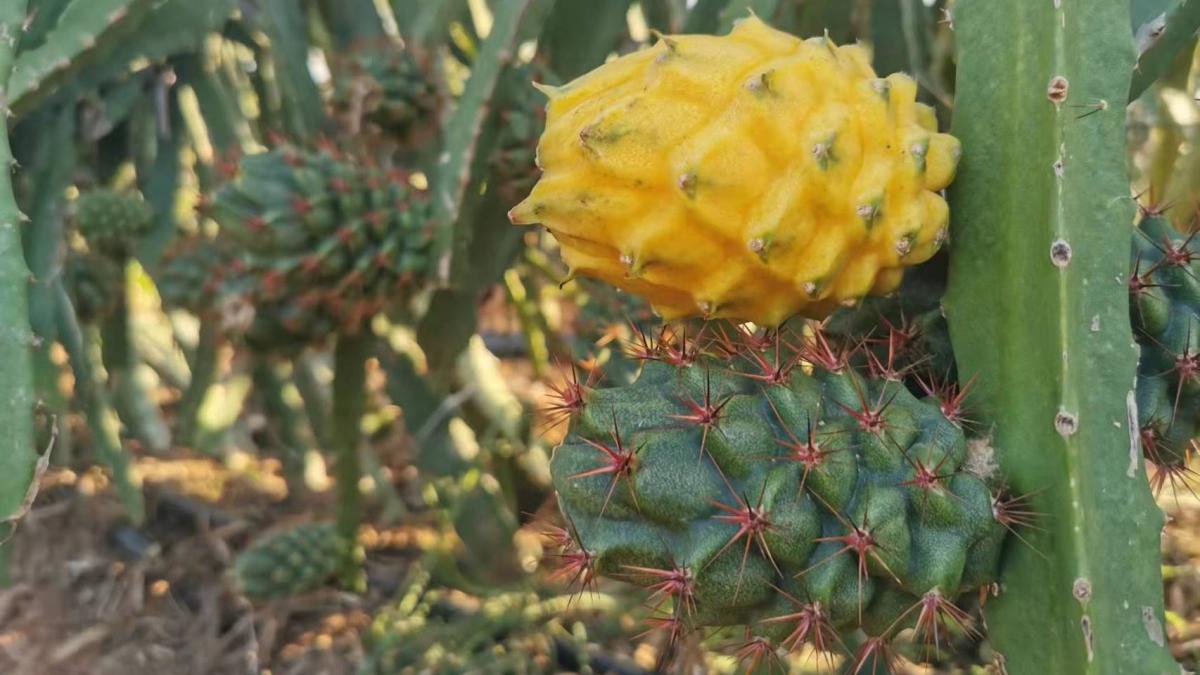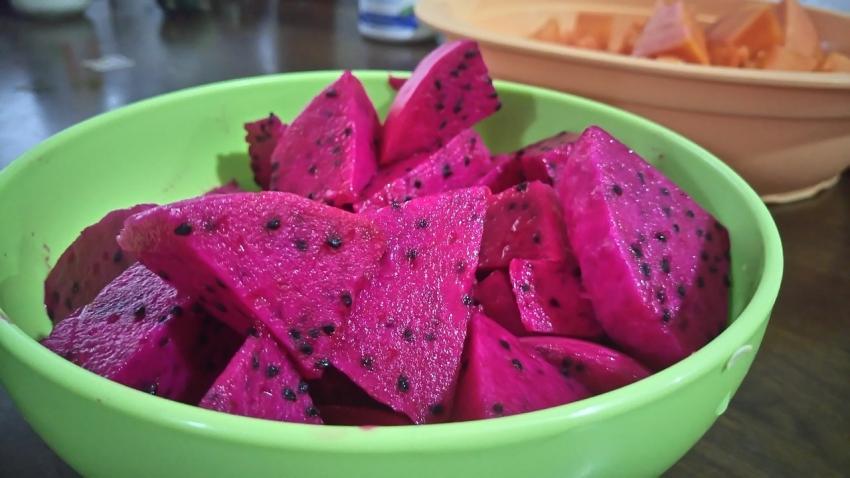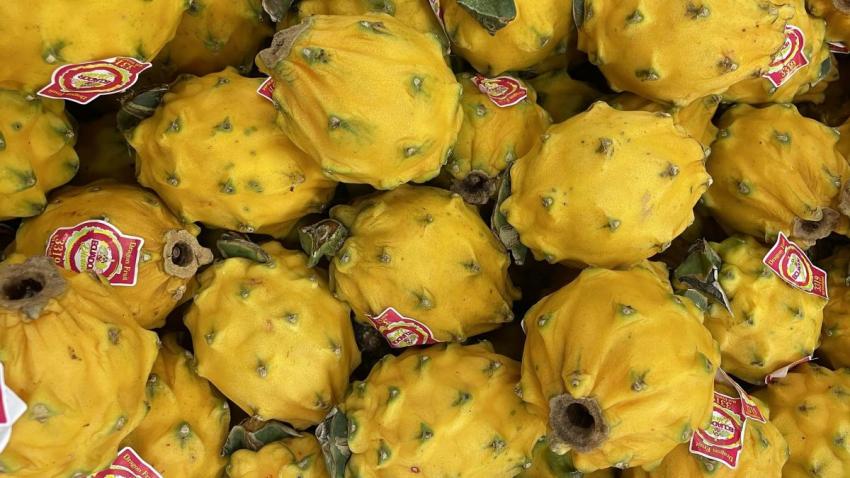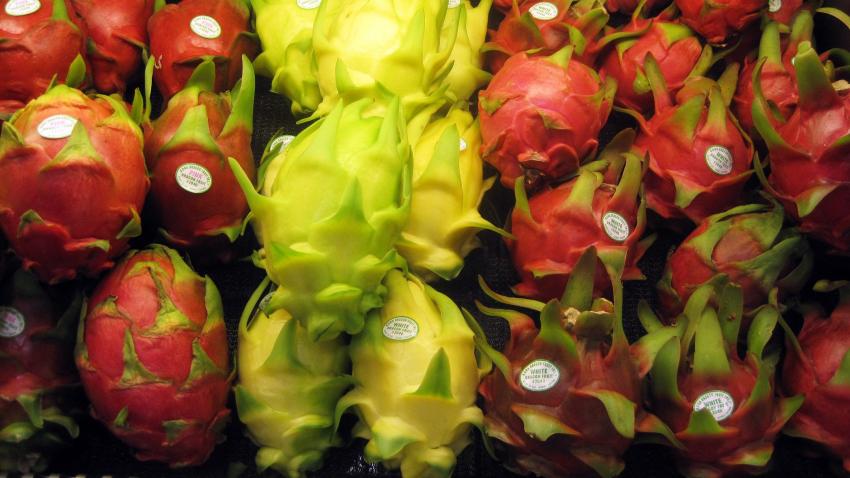You are here
Back to topChina’s Domestic Kirin Fruit Production Poised To Take Off

At present, kirin fruit, also known as golden or yellow dragon fruit, are not commonly encountered in Chinese fruit shops and supermarkets. However, in recent years, this fruit has started to draw attention from consumers attracted to its novel color and greater sweetness compared with standard red-skinned dragon fruit, which are almost ubiquitous in China. As such, Chinese fruit growers have taken notice and are starting to increase their plantings of kirin fruit hoping to cash in on an emerging trend.
Combined with imported Ecuadorian kirin fruit, which were recently granted market access to China, this increasing domestic production may eventually push kirin fruit into the mainstream, according to Xie Zhan of Huaye Tropical Crops, which produces kirin fruit in China’s tropical island province of Hainan.

Huaye Tropical Crops was among the earliest commercial-scale kirin fruit growers in China. According to Xie, widescale commercial plantings of kirin fruit in China began in the middle of 2021 after the species was introduced to China from Ecuador. He estimates that more than 650 hectares of kirin fruit have been planted in Hainan. Nationally, Xie said that there is likely more than 1,300 hectares, with the two other major growing regions being Guangdong and Yunnan provinces.
In Yunnan, production is primarily concentrated in Xishuangbanna Dai Autonomous Prefecture, which borders northern Laos. This region’s advantage is that it can bring kirin fruit to market during the Mid-Autumn Festival, which typically falls in late September or early October. Meanwhile, the main production area in Guangdong is the area surrounding the city of Zhanjiang, which is known for producing large fruit. Production in Hainan is concentrated on the island’s eastern side, as well as around the cities of Sanya on the southern tip and Ledong to the southwest. Hainan is able to continuously supply kirin fruit from January to June.

One reason that kirin fruit have started to gain a foothold in China is a consumer preference for fruits with a sweeter flavor. According to Xie, kirin fruit are distinguished by a lack of the grassy taste that some people associate with red-skinned dragon fruit and have typical Brix values of 20–25 degrees, sometimes reaching as high as 27 degrees. By comparison, normal red-skinned dragon fruit usually lie in the range of 16–20 degrees, said Xie. Furthermore, kirin fruit tend to have a relatively thick and non-scaly skin, which means that they can be stored longer and are more resistant to damage during transit.
At present, retail prices for kirin fruit in China are running high at approximately 60–100 Chinese yuan ($9.41–15.69) per kilogram, which reflects the currently limited supply and puts the fruit out of reach for day-to-day consumption by many people. However, Xie expects that this situation will change as new plantations from 2021 and 2022 start to ramp up their output and Ecuadorian kirin fruit become available on the market following the recent signing of export protocols. Xie believes that this will eventually drive down prices to the point where kirin fruit can become a mainstream product.
In terms of competition between domestically grown kirin fruit and imports from Ecuador, Xie said that while the Ecuadorian fruits tend to be larger, there is not a significant difference in terms of flavor or sweetness level. Chinese kirin fruit are, however, expected to have a price advantage in the future when output increases. Although Chinese and Ecuadorian kirin fruit have overlapping supply periods, Xie took a positive view of the competition between the products — he is hopeful that imported Ecuadorian kirin fruit will create a price benchmark when they enter the market and help prevent prices from dropping too much for domestic producers in the future.
Images: Huaye Tropical Crops
This article was translated from Chinese. Read the original article.

















Add new comment